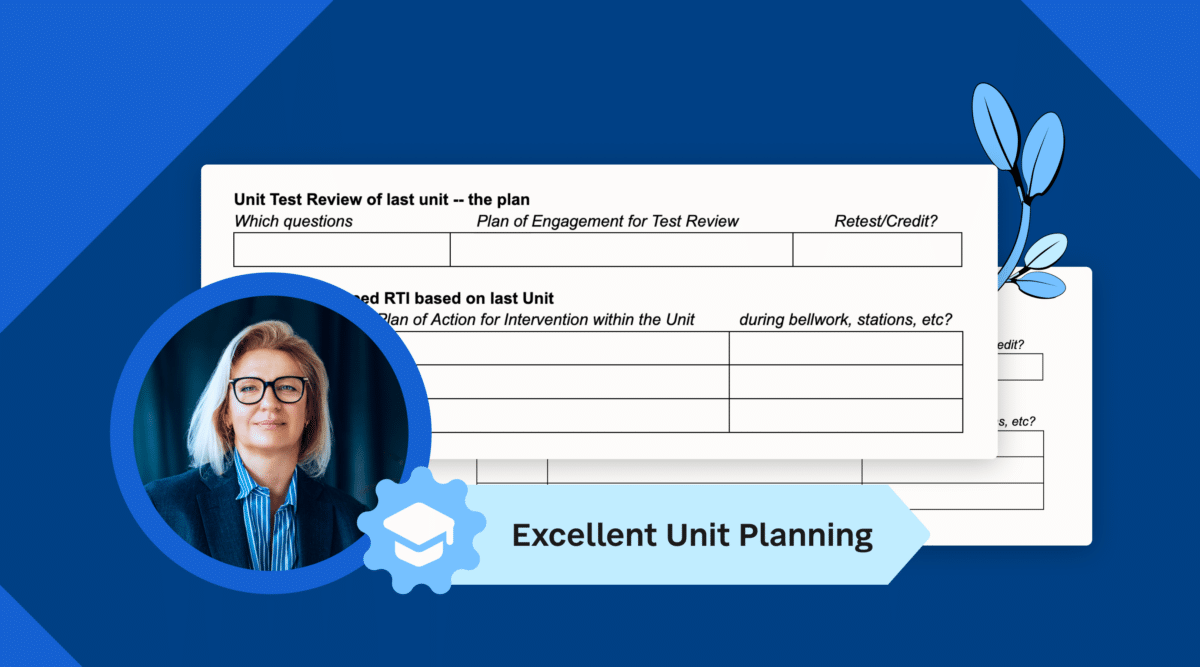

You’ve heard of classroom walkthroughs, but what about lesson plan walkthroughs? Rachel Wyatt, Secondary Instructional Specialist at New Boston ISD in Texas, shares her tips for giving quality feedback on lesson plans by connecting them to classroom walkthroughs.
If you’re like me and your job duties include lesson plan accountability, then chances are that it’s a challenge to find time for it. The majority of my time is taken up with writing district plans, disaggregating data, password resets, PLCs, walkthroughs, planning meetings, and Zoom meetings. With all of this to do, looking over lesson plans often ends up on the back burner.
I decided to hone in on lesson plans, providing detailed feedback, and connecting them with instruction.
Lay the Groundwork
I kicked off the project by spending some time synthesizing my experiences, education, readings, workshops, our district curriculum management plan, our district curriculum alignment goals, and our district lesson plan template.
Putting that time in helped me shape the vision of what feedback should look like, promoting our district goals for curriculum and instruction that ensure student progress. This included identifying what an exemplar lesson contains and what an exemplar lesson looks like. In addition, it helped me identify the areas of feedback that would best support our teachers in creating effective lesson plans.
Share the Plan
Once I had completed my plan, it was important to share it with the faculty via a professional development session. In the session, I talked about the Big Three in the Instructional Cycle and emphasized how vital the planning stage is to the entire process. I included an example lesson from a teacher in our district, and had teachers discuss it in groups. I also explained the process I planned to utilize for my lesson plan walkthroughs.
Our curriculum committee previously decided to share lesson plans district-wide to enhance and support vertical alignment. Every teacher in the district can see all lesson plans and comment on them. Aware that we already had this great resource, it was important that every teacher knew how to access the shared drive, and how to comment on a document.
Give Written feedback
It’s critical to carve out time each month for lesson plan feedback. Depending on how many teachers you support, this can be a cumbersome task! I currently coach twenty-eight educators, and our district plans a full unit at a time. I allocate two half-days per month for lesson plan walks where I focus solely on the written lesson plans.
When I first review a lesson plan, it’s tempting to mark it up and comment on everything I find, which is neither practical nor efficient. I’ve found that giving one “glow” and one “grow” is best, always focusing on what will have the highest impact on student learning. I align my feedback with the Texas T-TESS Rubric as I find that these skills and look-fors are perfect to use with lesson plan walks.
See the Plan in Action
Anyone who has ever taught knows that there is a disconnect between what is planned and what is delivered—it is inevitable. For this reason, I also allocate two half-days per month for follow-up walks, where I can see how the plan translates into classroom instruction. I like to pick a day from each lesson plan that looks interesting and put it directly into my calendar for a classroom walkthrough. It’s a great opportunity to celebrate success, as well as gather data to inform the next planning phase.
Pro-tip: Include a link to the lesson plan when you add the walkthrough to your calendar so it’s easy to reference when you visit the classroom.
Final Note
Coaching this way requires collaboration from coaches, principals, and teachers. Taking the time to analyze the correlation between teaching and learning, and to discuss pedagogy, planning, and teaching strategies is invaluable. Ideas from these meetings then cycle back into upcoming lesson plans. The tighter the cycle between planning, delivery, and assessment, the greater the impact on student learning!
About Our Guest Blogger
Rachel Martin Wyatt is the Secondary Instructional Specialist at New Boston ISD in Texas. Over the years, she has taught grade levels ranging from Pre-K to 12th grade and has been a Preschool Director, Assistant Principal, and “future teacher” organization sponsor. Rachel holds an MEd from UT-Arlington, and a BA and a BS from UT-Austin. Outside of work, Rachel enjoys spending time with her husband, three grown children, close friends, and four dogs. She likes reading, cooking, and organizing. Be sure to connect with Rachel on LinkedIn!
Stay Connected
News, articles, and tips for meeting your district’s goals—delivered to your inbox.





